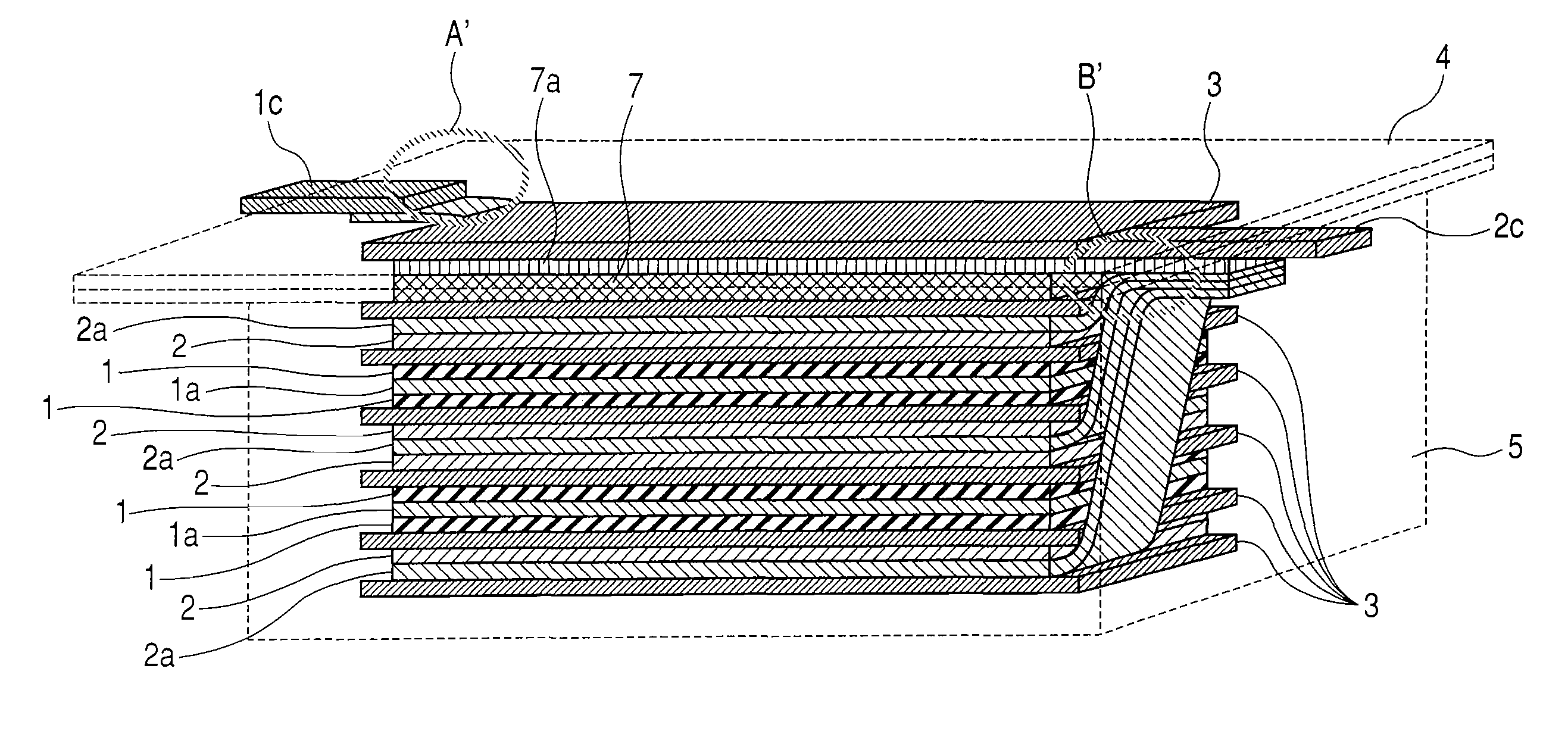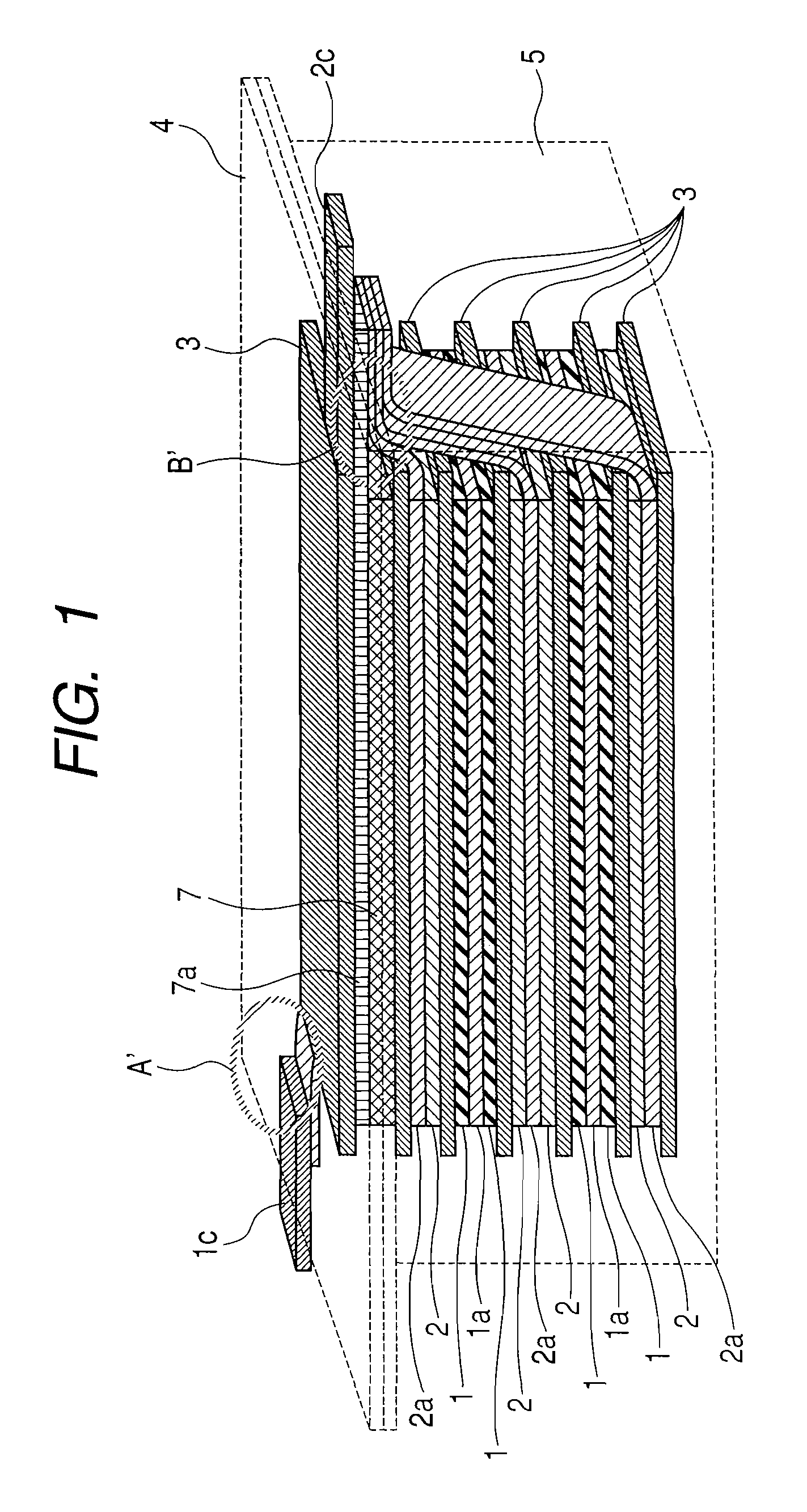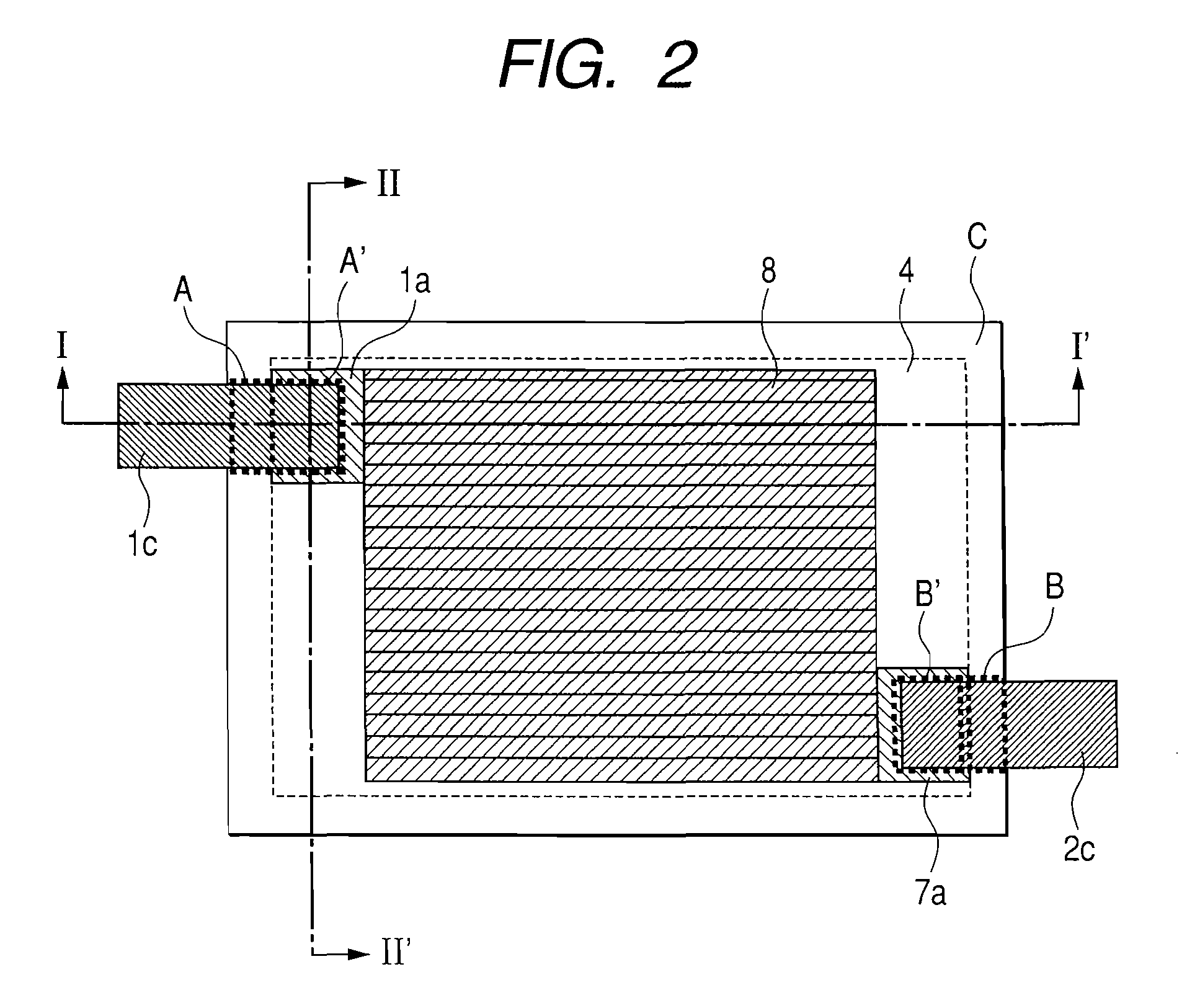Organic Electrolyte Capacitor Using a Mesopore Carbon Material as a Negative Electrode
a technology of mesopore carbon and negative electrode, which is applied in the direction of electrolytic capacitors, liquid electrolytic capacitors, etc., can solve the problems of low electroconductivity of electrolyte containing lithium ions, slow absorbing and desorbing reaction of lithium ions at the negative electrode, and difficult discharge at a high current density. achieve the effect of increasing the energy density
- Summary
- Abstract
- Description
- Claims
- Application Information
AI Technical Summary
Benefits of technology
Problems solved by technology
Method used
Image
Examples
example
Examples 1 to 8, Comparative Examples 1 to 10
(Preparation of Mesopored Carbon Material for Negative Electrode)
[0194]As the starting resin material, 50 g of granular phenol resin BELPEARL R700 (manufactured by Kanebo Co.) were uniformly dispersed in an aqueous solution of Ni nitrate conditioned so as to provide a predetermined Ni content to the resin. After drying the slurry at 100° C. for 20 hrs and removing the water content, it was placed in a stationary electric furnace of 8 L inner volume and the temperature was elevated to predetermined temperatures (heat treatment temperature) shown in Table 1 at a temperature elevation rate of 100° C. / hr while flowing 0.5 L / min of nitrogen. Subsequently, the retention time at the heat treatment temperature was set to 10 hrs. Since the Ni-treated carbon materials contained incorporated Ni, acid cleaning was repeated twice at 80° C. with 2N HCl for 3 hours to remove Ni. Physical properties of Samples 1 to 5 as the mesopored carbon materials obt...
example 9
(Charge / Discharge Characteristics Evaluation 2 for Organic Electrolyte Capacitor)
[0209]The positive electrode 1 was cut out into 5 sheets each of 1.5×2.0 cm2 size and used as a positive electrode 1 for evaluation. Further, the negative electrode 4 for evaluation was also cut out into five sheets, the cell identical with that for the evaluation of charge / discharge characteristics of the single negative electrode of Example 1 was assembled and lithium was preliminarily supported by 0, 100, 200, 300, and 400 mAh / g per weight of the negative electrode active material. Then, the cell was decomposed and the lithium of the counter electrode was replaced with the positive electrode 1 for evaluation and the organic electrolyte capacitor was assembled by the number 5 cells. Each of them was charged with a constant current of 2.5 mA till the cell voltage reached 3.6 V and then discharged with a constant current of 2.5 mA till the cell voltage reached 1.6 V. the 3.6 V-1.6 V cycles were repeated...
example 10
(Charge / Discharge Characteristics Evaluation 3 for Organic Electrolyte Capacitor)
(Method of Preparing a Negative Electrode 10 Using a Current Collector Having Surface-to-Rearface Through Hole)
[0211]A non-aqueous carbon type conductive paint (EB-815, manufactured by Nippon Achison Co.) was coated by spray-method on both surfaces of a copper expanded metal of 32 μm thickness (porosity: 50%) (manufactured by Nippon Metal Industry Co.) and dried to obtain a negative electrode current collector formed with a conductive layer. The entire thickness (total for the thickness of the current collector and thickness of the conductive layer) was 49 μm, and the through holes were substantially clogged with the conductive coating material. The slurry of the negative electrode 5 was formed on both surfaces of the negative electrode current collector by using a roll coater to obtain a negative electrode 10 of the total thickness for the entire electrode after pressing of 153 μm (total for the thickn...
PUM
| Property | Measurement | Unit |
|---|---|---|
| pore diameter | aaaaa | aaaaa |
| positive electrode potential | aaaaa | aaaaa |
| temperature | aaaaa | aaaaa |
Abstract
Description
Claims
Application Information
 Login to View More
Login to View More - R&D
- Intellectual Property
- Life Sciences
- Materials
- Tech Scout
- Unparalleled Data Quality
- Higher Quality Content
- 60% Fewer Hallucinations
Browse by: Latest US Patents, China's latest patents, Technical Efficacy Thesaurus, Application Domain, Technology Topic, Popular Technical Reports.
© 2025 PatSnap. All rights reserved.Legal|Privacy policy|Modern Slavery Act Transparency Statement|Sitemap|About US| Contact US: help@patsnap.com



